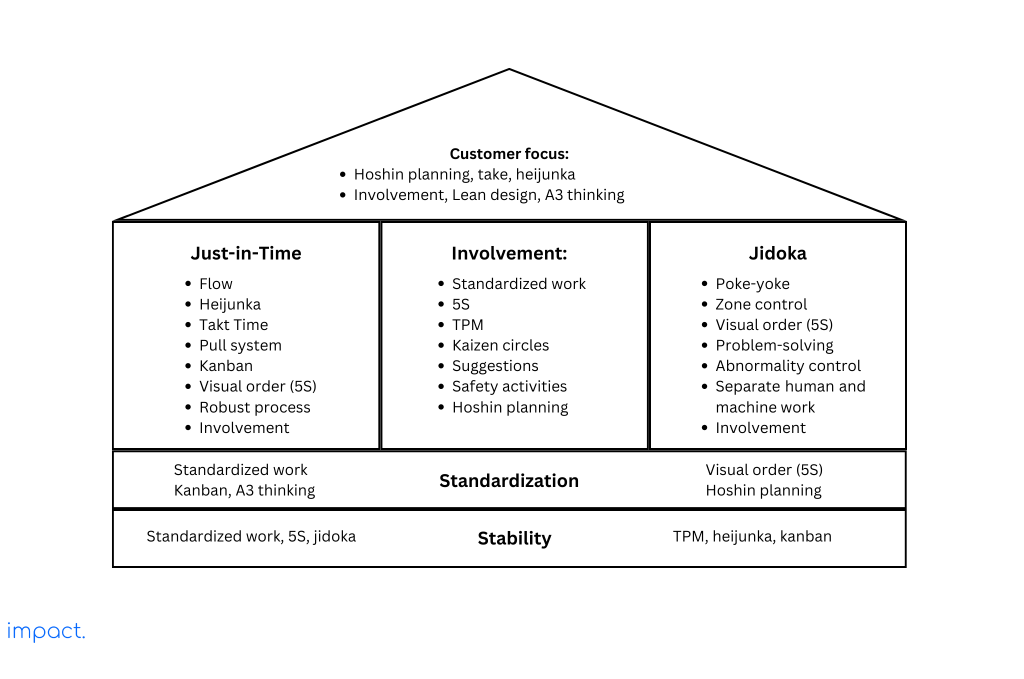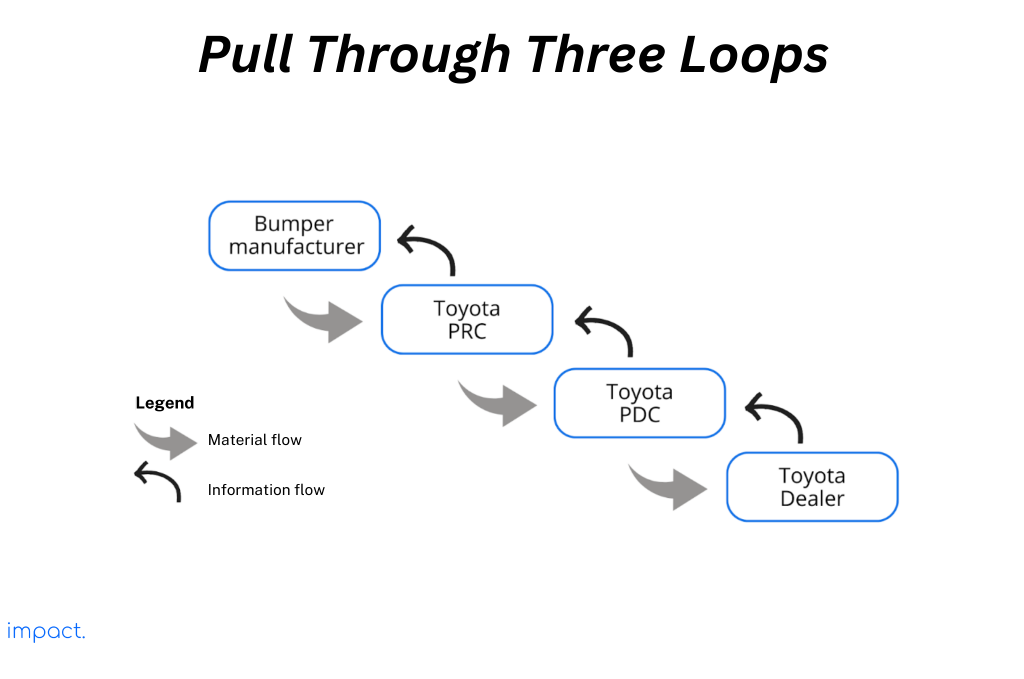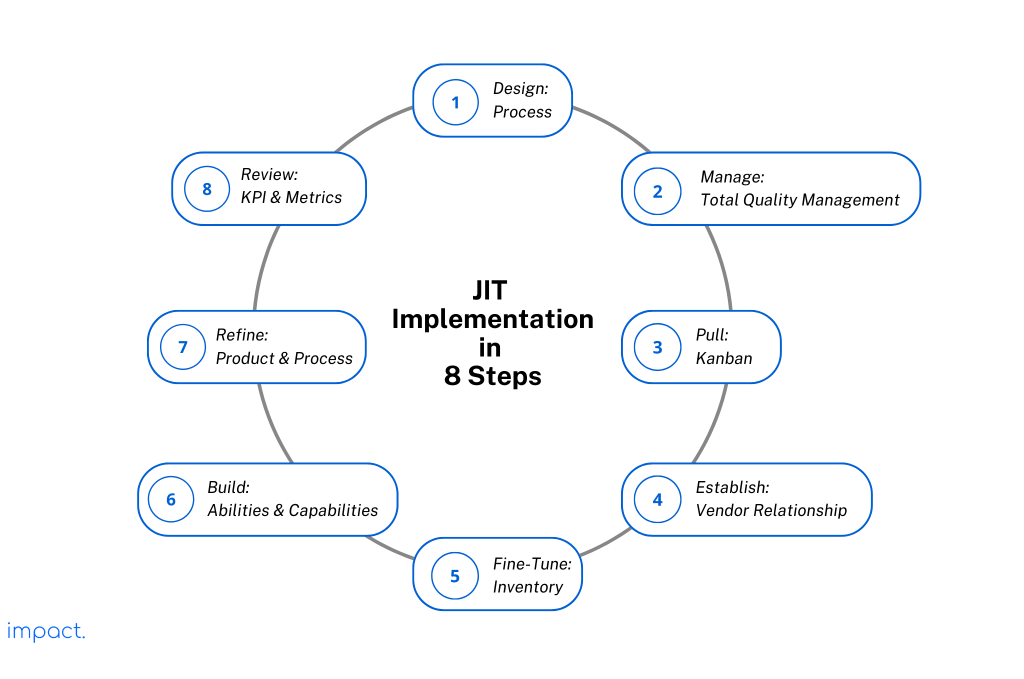Kanban: Definition, 6 Rules, and its Benefits
Kanban is a crucial part of the Just in Time (JIT) system, which we discussed…
Sean Thobias
May 17, 2025Just in Time (JIT) forms an integral part of the House of Lean Production. It is a strategy to align company supply with demand, avoiding excessive production (overproduction).

Overproduction is a significant issue in the manufacturing industry, particularly in the fashion sector. One commonly employed strategy to address this problem is the Just in Time inventory system.
In 2018, Burberry had to burn unsold products worth US$36 million, and H&M struggled with unsold stock valued at US$4.3 billion. These situations pushed companies to explore different approaches, like using Just in Time (JIT) in their inventory management, to boost efficiency.
Let’s explore Just in Time more thoroughly, including its definition, principles, and advantages.
Just in Time (JIT) is a strategy that helps produce the right products at the exact time and amount needed. It improves efficiency by making what is necessary for the production process. JIT also reduces inventory, simplifies manufacturing processes, and saves manufacturing costs.
Toyota introduced Just-in-Time (JIT) in the 1950s as a direct response to specific problems:
Toyota depends on the entire Lean Manufacturing system to back up JIT. They have consistently improved how they use JIT. In the 1980s, JIT, along with quality circles, Statistical Process Control (SPC), and other Japanese innovations, were introduced to North America.
Conventional manufacturers adopt a system where they “push” their products, disregarding actual demand. They rely on a projected need to create a master schedule. Each department receives daily orders for the final assembly of the required parts. This approach often leads to long changeover times and the production of large batches.
However, this method hinders effective inventory tracking. Parts shortages are frequent, prompting the need for “just in case” supplies as a protective measure. Consequently, companies require larger spaces or facilities and an increased workforce. The use of extensive facilities and batches isolates workers and hampers communication.
Companies have developed various systems to facilitate the implementation of Just in Time, which helps solve problems and encourages more efficient innovation. In the 1970s, computerized Material Requirements Planning (MRP) replaced manual scheduling. This change significantly improved the process. A sound MRP system can keep track of inventory, order materials, and give instructions to each department for what they need to do next.
Even though there have been some improvements, we still face a few problems, such as product defects, equipment downtime, unexpected replacements, and other unforeseen events. As a result, our production schedules often struggle due to too many or too few parts — posing challenges for downstream operations.
During the 1990s, it transformed and became a robust Enterprise Resource Planning (ERP) system. This system could handle various company tasks, including production, logistics, maintenance, quality, and human resources.
Read more: Lean Manufacturing: Definition & 3 Advantages to Utilize
JIT manufacturing follows a simple principle called pull production. It means making products based on customers’ needs, not just guesses or forecasts. This principle helps manufacturers quickly respond to changes in demand, avoid making too much or storing unnecessary items, and better control their inventory.
Another critical part of JIT manufacturing is the focus on continuous improvement. Manufacturers keep looking at their production processes to find and fix any problems or inefficiencies. By doing this, they can make things faster and produce higher-quality products.
JIT production has a few basic rules:
Womack and Jones defined the concept of supporting continuous flow and pull. Now, we will explore the definitions of these ideas:
Companies can improve the flow of their operations by implementing the following approach:
Most managers say that goods and services go through the system, and management reduces complex systems’ performance variations. The current system needs to be scrapped entirely and rebuilt with a focus on providing value to customers.
Pull refers to the condition where upstream producers cannot produce goods or services until downstream customers make specific requests. Companies cannot manufacture unless customers actively order their products or services.
For example, you accidentally back up your blue Toyota Camry 2000 into a mailbox, damaging your bumper. You would head to your local Toyota dealer for assistance in such a situation.
The dealer would promptly install a replacement blue Toyota Camry 2000 bumper, which would, in turn, create a space in their shop area. This gap would signal the nearby Toyota Parts Distribution Center (PDC), requesting a blue Toyota Camry 2000 bumper to replace the one they installed on a customer’s car.
PDC ships new bumpers to dealers and works with the Parts Redistribution Center (PRC), where Toyota suppliers send their parts. PRC requested that the manufacturer produce a blue bumper for the 2000 Toyota Camry and then forwarded it to PDC.
The bumper manufacturer sets aside specific time slots for making blue bumpers. The table below shows the three steps, or “pull loops,” to get the bumper from the manufacturer to the dealer.

If dealers didn’t have a pull system, they would need to stock multiple parts shops. It would require PRC and PDC to maintain large warehouses at a significant expense from an early stage.
Tracking parts becomes increasingly difficult as the size of the warehouse grows. If you place a custom order for a bumper, you might have to wait several weeks for the manufacturer to build it and ship it to the dealer.
Dealers can use the money freed up by the pull system to invest in more repair shops, better diagnostic equipment, or training to enhance shop mechanic skills. Similarly, dealers can use the money saved through PDC and PRC to strengthen the company further or boost profits.
To implement a Just in Time (JIT) inventory management system for companies follow these eight steps:

Toyota’s goal with Just in Time is to ensure a smooth flow of value for customers to order their products. The critical components of a JIT system include:
Kanban and heijunka rely on the following factors:
A. Implementing standardized work is crucial for kaizen. It involves applying jidoka to minimize imperfections.
B. Capable workers are problem solvers with multiple skills and actively engage in improvement activities.
C. Capable machines utilize TPM and 5S activities to eliminate the six significant losses: equipment breakdowns, setup and adjustment delays, minor downtime, speed drops, process defects, and throughput issues.
Implementing Just in Time (JIT) in companies helps make production more efficient. However, there are downsides to using JIT. Let’s take a closer look at the benefits and drawbacks of implementing JIT:
Many big and small companies widely use the Just in Time inventory system. It’s a popular choice because it helps improve cash flow and reduce the amount of money tied up in inventory. This system is standard in manufacturing industries, such as car companies, clothing, aerospace, automotive, construction, fast food, health care, publishing, and retail.
Here are some examples of global companies that have adopted the JIT system in their business processes:
Just in Time (JIT) is a production strategy that focuses on delivering the exact amount of goods at the precise moment customers demand. The goal of implementing JIT is to ensure a continuous production flow, leading to improved company efficiency.
JIT has been successfully utilized by renowned companies like Dell and Apple, demonstrating its effectiveness in optimizing the production process.
JIT comprises various components, including Kanban and Product Leveling. The next chapter will explore these components in detail.
Dennis, P. (2017). Lean production simplified: a plain-language guide to the world’s most powerful production system. Crc press.
Impact Insight Team
Impact Insights Team is a group of professionals comprising individuals with expertise and experience in various aspects of business. Together, we are committed to providing in-depth insights and valuable understanding on a variety of business-related topics & industry trends to help companies achieve their goals.
Ask about digital transformation, our products, pricing, implementation, or anything else.
We are excited to be part of your transformation journey from day one.